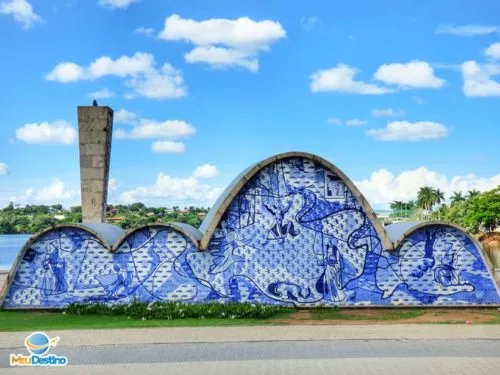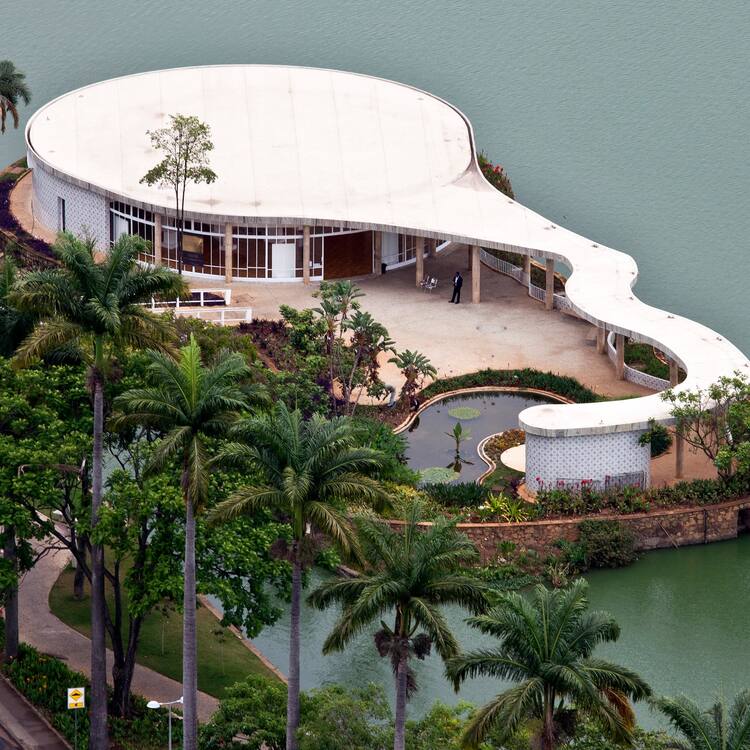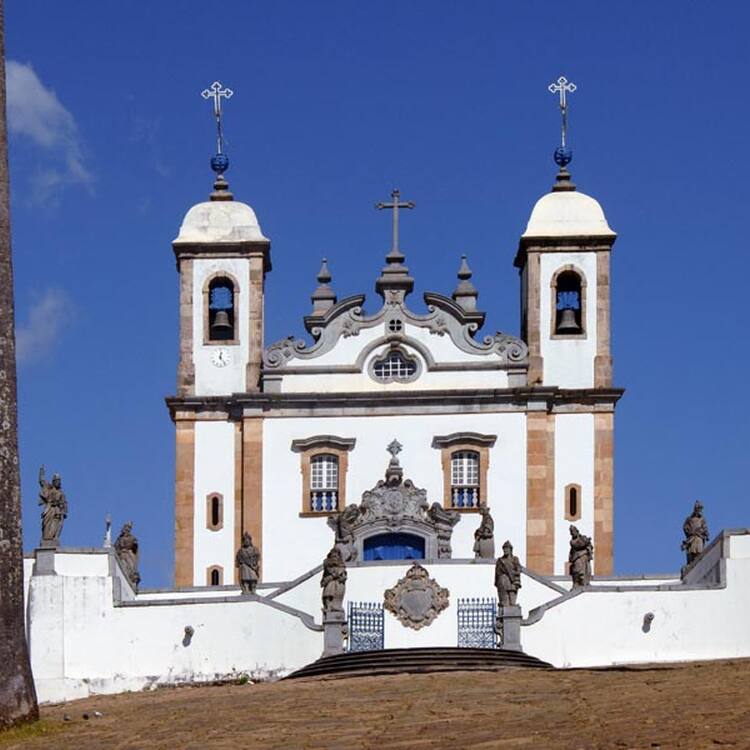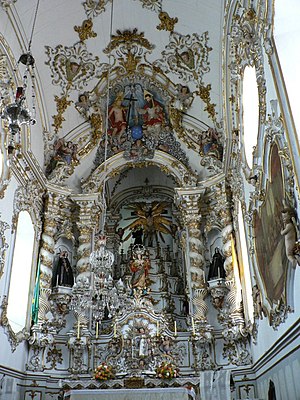MINAS GERAIS EAST (Belo Horizonte, Ouro Preto, Montes Claros) April 18 – 20, 2022
It was a 20-hour bus ride leaving Porto Seguro at 12:45 and arriving in downtown Belo Horizonte at 8 am. I had breakfast at the nearby Central Market and then walked to the Rodoviaria to see about buses to Diamantina. It was a Monday and most museums were closed so I decided to make the 310 km trip there. While waiting for the 15:30 departure I went on a bus/walkabout to see a few things.
BELO HORIZONTE (pop 2.7 million, 6 million metro. “Beautiful Horizon’) is the sixth-largest city in Brazil and the capital of the state of Minas Gerais, Brazil’s second-most populous state. It is the first planned modern city in Brazil.
The region was first settled in the early 18th century, but the city as it is known today was planned and constructed in the 1890s, to replace Ouro Preto as the capital of Minas Gerais. The city features a mixture of contemporary and classical buildings and is home to several modern Brazilian architectural icons, most notably the Pampulha Complex.
The city is built on several hills and is completely surrounded by mountains. There are several large parks in the immediate surroundings of Belo Horizonte. The Mangabeiras Park (Parque das Mangabeiras), 6 km (4 mi) southeast of the city centre in the hills of Curral Ridge (Serra do Curral), has a broad view of the city. The Jambeiro Woods (Mata do Jambeiro) nature reserve extends over 912 hectares (2,250 acres), with vegetation typical of the Atlantic Forest.
Belo Horizonte was one of the host cities of the 1950 and the 2014 FIFA World Cup. Additionally, the city shared as host of the football tournament during the 2016 Summer Olympics.
Settled in 1701, part of a gold rush expedition. The previous capital of Minas Gerais, Ouro Preto (meaning “black gold”, due to dark rocks with gold inside found in the region), was a symbol of both the monarchic Brazilian Empire and the period when most of the Brazilian income was due to mining. That never pleased republican intellectuals and in 1889, under the new name of Cidade de Minas, or City of Minas was selected. An interesting feature of Reis’ downtown street plan for Belo Horizonte was the inclusion of asymmetrical array of perpendicular and diagonal streets named after Brazilian states and Brazilian indigenous tribes. In 1906, the name was changed to Belo Horizonte. Population growth was intense in the last 20 years of the 20th century.
In the 1940s, a young Oscar Niemeyer designed the Pampulha Neighbourhood to great acclaim. He and Juscelino Kubitschek are largely responsible for the wide avenues, large lakes, parks, and jutting skylines that characterize the city today.
The Latin American research and development center of Google, continues to be a trendsetter in the arts, music, literature, architecture, and the avant-garde are concerned.
The Zoo is one of the most complete in Latin America with 900 animals representing 200 species, with the first public butterfly sanctuary in South America.
Climate. Belo Horizonte has a latitude at 19’55” and has a tropical savanna climate milder due to the elevation, with humid/warm summers and dry/mild winters. Belo Horizonte is located about 500 kilometres (310 mi) from the sea. Belo Horizonte’s climate is mild throughout the year with temperatures between 11 and 31 °C
Central Market. I had a good breakfast of sausages in a bun in the market. It is large with a wide selection of products.
I arrived in Belo Horizonte on a Monday and all museums were closed so I decided to go to Diamantina despite it being almost 300 km and 6+ hours by bus, possibly the longest detour I have ever made to see one site. As the bus didn’t leave till 15:30, I saw the following sites in the south of Belo Horizonte.
Brazilian Football Museum. In the Mineirao Football Stadium, it has memorabilia, jerseys, trophies, and exhibits on the football greats of Brazil. 30 BR
I walked down from the museum to the church and then around the lake past the tennis club to the Casa do Baile.
Pampulha Modern Ensemble WHS. The Ensemble is the centre of a visionary garden city project created in 1940 in the Pampulha District of southern Belo Horizonte. Designed around an artificial lake, this cultural and leisure centre included a casino, a ballroom, the Golf Yacht Club, and the São Francisco de Assis Church. The buildings were designed by architect Oscar Niemeyer, in collaboration with engineer Joaquim Cardozo, and artists including Cândido Portinari, created bold forms that exploited the plastic potential of concrete and integrated the plastic arts such as ceramics and sculpture. Landscape designer Roberto Burle Marx reinforced the links between the buildings and their natural landscapes through designed gardens and a circuit of walkable spaces mirrored in the lake and using architecture, landscape design, sculpture, and painting into a harmonious whole. It reflects the influence of local traditions, the Brazilian climate, and natural surroundings on the principles of modern architecture.
The Casino is now the Pampulha art museum, the Ballroom is the Centre of Reference in Urbanism, Architecture, and Design (both on the south side of the lake), the Golf Yacht Club is the Yacht Tennis Club, and the São Francisco De Assis Church (both on the north side of the lake) remains in use as a church.
Capela Curial de Sao Francisco de Assis. A round vaulted design, the exterior has blue/white mosaics. The inside has a wonderful mosaic of St Francis behind the altar.

 Tennis Club. Private owned, it could not be entered but has nice clay courts and volleyball courts.
Tennis Club. Private owned, it could not be entered but has nice clay courts and volleyball courts.
Casa do Baile. Designed by Oscar Neimeyer, the one-story round building sits on a round artificial island and hosts temporary exhibits.

I boarded the bus for Diamantina at 15:30 and arrived at 9:30 pm. The bus let us off on the outskirts. I had no hotel booked and stopped at the first into town, Posada Real, and had a satisfactory room (with a nice warm shower) for 80 BR, very cheap.
DIAMANTINA
It was built during the colonial era in the early 18th century as a center of diamond mining in the 18th and 19th centuries. A well-preserved example of Brazilian Baroque architecture, Diamantina is a UNESCO World Heritage Site.
Other historical cities in Minas Gerais are Ouro Preto, São João del-Rei, Mariana, Tiradentes, Congonhas and Sabará.
Before the arrival of Portuguese settlers, in the 16th century, the area was occupied by indigenous peoples of the Macro-Jê languages.
Diamantina was founded as Arraial do Tejuco in 1713, with the construction of a chapel. The town had strong growth when diamonds were discovered in 1729. During the 18th century, the city was famous for having sheltered Chica da Silva, a freed slave who was the wife of the richest man in Colonial Brazil, João Fernandes de Oliveira.
Diamantina was the largest diamond mining center in the western world in the 18th century. For nine years, until 1729, the Portuguese Crown was not aware of the discovery. Portugal’s response was to impose full control over the diamond regions of Minas Gerais lasting until 1845. Life in Diamantina at the end of the 19th century was portrayed by Alice Brant in her book Minha Vida de Menina,
Diamantina is located 292 kilometers almost directly north of Belo Horizonte, in a mountainous area at an elevation of 1,114 meters.
Historic Centre of the Town of Diamantina WHS. In the heart of arid and rocky mountains in north-east Minas Gerais, the Historic Center of Diamantina rises 150m up the side of a steep valley, with winding and uneven streets following the natural topography.
The Baroque architecture differs from that of other Brazilian towns in being of wood, with modest Portuguese architectural features. Churches have similar colours and textures as civil buildings, and most have only one tower. The regularly aligned 18th and 19th-century semi-detached houses with one or two floors are painted in bright colours on a white background, and contrast with the grey flagstone paving of the streets.
The historic centre testifies to the conquest of Brazil’s interior regions, illustrating how explorers, diamond prospectors, and representatives of the Portuguese Crown forged an original culture.
Diamantina remains well preserved, both elements ingeniously etched into the surrounding rocky hillsides giving rise to a stratified city separated from its highest to its lowest points by as much as 150 meters.
A road follows the ridgeline almost 2 km to Centro with a church and the Rodoviaria. The Centro Historico is down the hill to the east – all flagstone streets, white houses with painted trim, and the main area centered around the Metropolitan Cathedral (built between 1932-38 replacing the original church built in about 1750).
I had a misto and coffee for breakfast, had a casual morning and caught the 10:45 bus back to Belo Horizonte, and then walked the 2 km to my hostel. BR Hostel has one of the nicest layouts of any I have stayed in: a lovely kitchen, sitting area, breakfast area and the highlight a second-story deck.
On my last day in Belo Horizonte, I had a walk/metro about to see all the following museums and sites:
Niemeyer Building. The building is located in Praça da Liberdade, on the corner of Avenida Brasil. The 34-story building, in a modern style, has sinuous curves that refer to the lines of the Serras Minas Gerais. It is characterized by winding facades covered by horizontal louvers that protect from the sun and provide privacy to the apartments while keeping the landscape free for its occupants.
It was designed by the Brazilian architect Oscar Niemeyer, a decade after the works of the Pampulha Architectural Complex, in 1954, and was completed in 1960.
I have seen a lot of Niemeyer architecture and this is my favourite.

Mineiro Museum has long-term and temporary exhibitions both by established and beginner artists, related to the State’s material and immaterial heritage. Free
Museu Inimá de Paula. In a gorgeous 1920s art deco building, the two floors exhibit two different artists, neither very inspiring. Free
Fashion Museum. The interior of this 1911 building is lovely with wood floors and curving stairways, and blue/red stained glass. The first floor has actually clothing (also hats and purses) from the 1940s and the second long hanging photos of fashion to the 1980s. Not very interesting. Free
Arts and Crafts Museum. Don’t miss this excellent museum, one of the best of its kind in the world. It is curated beautifully and full of all kinds of industrial machines related to the sugar industry, tiles, and bricks, carpentry, balances, shoes, textiles, blacksmithing, metalworking, mining, carts, water power, etc. Free.
Museum of the Brazilian Expeditionary Force. This museum preserves the memory of the participation of Brazil and the state of Paraná soldiers in World War II. It includes photographs, films, maps, and documents of the period as well as war items that illustrate the involvement of the Expeditionary Force, Air Force, and Navy of Brazil in the conflict. Also leaflets and stamps of the time and a collection of medals, ribbons, badges, photos, and journals from Brazilian officials.
I then took the metro (4.50 BR/trip above ground) to:
Natural History Museum. Easily in the running for the worst museum in the world, this is combined with the Botanical Garden, really a series of trails and cobble paths through a large forest. First finding it is a major challenge. From the Santa Inez metro station, cross the road and turn right to follow a fence. Once at the entrance, I was given an elderly man who escorted me back along the fence on a cobble road to the museum, a collection of small buildings with dated and poor exhibits – botany and insects and paleontology which was closed for lunch. There are more administrative offices and people working here than people seeing it in a ratio of 25 to 1.
And then the Metro a long way away to Gameleira Station.
Museum of Natural Sciences. An excellent museum with a preponderance of skeletons – many dinosaurs, a whale, crocodiles, and mammals. Some good dioramas. 6 BR reduced.
And then the Metro 2 stops back with a walk past a Burger King on my way to:
Popular Art Center – Cemig. This is a lovely folk art museum over 3 floors. Surprisingly, I liked the religious stuff the most.
Vale Museum (Minas Gerais Museum). In a lovely building with wood floors, a lovely decorative iron stairs and coffered ceilings, this museum gives the history of Belo Horizonte and Minas Gerais using a vaiety of special effects, films and artistic displays. The highlight was a black and white photo exhibit, not on MG, but primarily on refugees around the world. Free
Museum of Mining and Metals. In another spectacular old building with wood floors, doors, and door jambs, wrought iron stairs, and decorative coffered ceilings, this is a high-tech museum showing the mineral wealth of MG. There are 430 rock specimens in one section. I learned all about Niobium, a mineral most used in producing alloys, especially with steel (80% comes from Brazil). Free
I closed this museum down after a long hard day of walking and metros seeing 9 museums.
Up early, I had breakfast and walked to the Rodoviaria to catch the bus to Congonhas at 8 am (hours 6, 6:30, 8, 8:30, 10:30, 11 etc) on Sandra bus lines.
Sanctuary of Bom Jesus do Congonhas. WHS. South of Belo Horizonte the sanctuary was built in the second half of the 18th century. It consists of a church with a magnificent Rococo interior of Italian inspiration; an outdoor stairway decorated with statues of the prophets; and seven chapels illustrating the Stations of the Cross, in which the polychrome sculptures by Aleijadinho are masterpieces of a highly original, moving, expressive form of Baroque art. Santuario de Bom Jesus de Matosinhos in the city of Congonhas, is a masterpiece of artist Aleijadinho (1738-1814). Standing high on a platform reached by a slightly curved, divided staircase carrying on its parapets statues of the twelve prophets in soapstone (pedra sabão), the Sanctuary is approached via a ramped forecourt between seven chapels marking Stations of the Cross (the Passos). The soapstone statues together with the polychrome wooden sculptures depicting scenes of Christ’s Passion housed in the chapels stand as a crowning achievement, reflecting the apex of Christian art in Latin America.
Santuario de Bom Jesus de Matosinhos in the city of Congonhas, is a masterpiece of artist Aleijadinho (1738-1814). Standing high on a platform reached by a slightly curved, divided staircase carrying on its parapets statues of the twelve prophets in soapstone (pedra sabão), the Sanctuary is approached via a ramped forecourt between seven chapels marking Stations of the Cross (the Passos). The soapstone statues together with the polychrome wooden sculptures depicting scenes of Christ’s Passion housed in the chapels stand as a crowning achievement, reflecting the apex of Christian art in Latin America.
The basilica’s flame-like, slightly recessed towers and innovative rococo-style façade converge to form an important example of Baroque art in Latin America. The Sanctuary of Bom Jesus de Congonhas remains in good condition as a religious icon and a focus for pilgrimage throughout the region.
I tried to get an Uber from the bus station but was not successful. So I walked the 2.8 km, half up a steep hill, to the church. I then walked back straight down hill past the 7 chapels and then a steep rough cobble road to return to the rodoviaria.
SAO JOAO DEL REI
I ended up with an hour wait for a bus to Sao Joao del Rei. There was no direct bus from Cargonhas to Sao Paulo so I thought I would stop here to see its church and then Tiradentes to see its church and museum and continue on to Sao Paulo. There is no Uber here and taxis were 120 return so I decided to skip Tiradentes. Sandra’s bus lines took only debit cards and this depleted all my cash. The ATM at the bus terminal didn’t work so I walked a long way to the only supermercado open (Bahamas) and withdrew 400 BR.
Igreja São Francisco de Assis. Begun in 1774, is one of the main landmarks of Brazilian colonial art, becoming famous for the beauty of its architecture, the richness of its carvings and the participation in the works of master Aleijadinho.
Image of the nave’s ceiling, which mirrors the original design of the floor plan.
The church has a large yard paved with stone and surrounded by an elegant balustrade. Its plan generally follows the conventional model of colonial times, with a single nave with side altars, a choir over the entrance, a deep chancel separated from the body of the nave by a monumental arch. The nave has curved walls, characteristic of the Rococo style.
The facade has two towers. a single monumental door, adorned with a carved soapstone frame, a large round oculus crowned by a large Lorraine cross flanked by two bulbous spiers.
What I liked was all the natural stone on the corners of the towers and decoration. 
The chapel and main altar.


The reliefs of the frontispiece of the facade.

The frontispiece of the high altar.
Its interior is richly decorated with exuberant carvings on all the altars and pulpits.
Due to the beauty of its interior and the majesty of its external setting, the church is one of the most sought after for weddings, and the square where it is located is the stage for many cultural events.
The bus to Sao Paulo left at 9:20 pm (256 BR) arriving at 7am. I had a bed seat for a comfortable night.
I visited Ouro Preto and Instituto Inhotim in Brumadinho on my first trip to South America in 2014. I didn’t see the following on this trip:
OURO PRETO
House and Biographical Museums: Ouro Preto: Museu Guignard
Religious Temples
Ouro Preto: Church of São Francisco de Assis
Ouro Preto: Nossa Senhora do Pilar
Museums – Various: Ouro Preto: Casa dos Contos
Military, War and Police Museums: Ouro Preto: Museu da Inconfidência
Pedestrian and Historical Bridges: Ouro Preto: Ponte dos Contos
TIRADENTES
Religious Temples: Tiradentes: Igreja Matriz de Santo Antonio
Religious and Sacred Art Museums (including Islamic and Jewish Museums): Tiradentes: Museu de Sant’Ana
Cities of the Americas
BARBACENA
CONSELHIERO LAFAIETE
GOVERNADOR VALADARES
IPATINGA/COLONEL FABRICIANO
ITABIRA
LAVRAS
MONTES CLAROS
MURIAE
POUSO ALEGRE
SETE LAGOAS
TEOFILO OTONI
UBA
VARGINHA POCOS DE CALDAS
Railway, Metro, Funiculars, Cable Cars: Poços de Caldas Cablecar
JUIZ de FORA
History, Culture, National and City Museums: Juiz de Fora: Mariano Procopio Museum
Art Museums: Juiz de Fora: Museu do crédito real
Railway, Metro, Funiculars, Cable Cars
Minas Narrow Gauge Railway
Vitoria-Minas Railway
Roads, Road Bridges and Tunnels: Road – BR-116: Fortaleza-Porto Alegre Highway
House and Biographical Museums
Cordisburgo: Museu Casa Guimarães Rosa
Três Corações: Casa Pele
Religious Temples
Catas Altas: Santuário do Caraça
Sabara: Nossa Senhora do Ó
World of Nature
Caparaó NP
Carste de Lagoa Santa Protected Area
Rio Doce State Park
Serra do Cipó NP
Serra do Gandarela NP
Serra do Intendente State Park
Sete Salões State Park
Waterfalls: Tabuleiro Waterfall
Caves and Sinkholes
Gruta de Maquiné
Gruta Rei do Mato
Rivers: São Francisco River
Festivals
Belo Horizonte: Expocachaça
Brumadinho: MECAInhotim
Well-being: Distilleries: Mazuma Mineira
Bizzarium: Varginha: Nave Espacial de Varginha